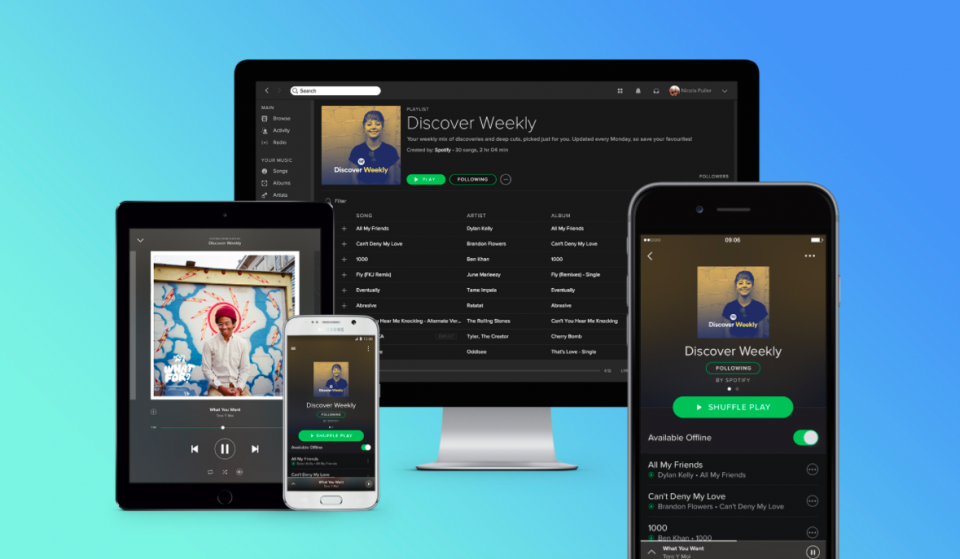Celebrities are immensely powerful people. Whether you believe their power stems from genuine talent, notoriety or even the Illuminati, one thing’s for sure – they hold massive sway over their enthralled fans – including how their fans spend money.
In the latest example of celebrities flexing their muscles, the likes of Rihanna, John Legend and Taylor Swift have been using their influence to get people to vote in U.S. elections. Having recently broken her political silence, Swift took to the American Music Awards to encourage people to vote and shared the same message to her 112 million-strong following on Instagram. Within the next 24 hours, more than 166,000 people registered to vote, nearly half being Millennials.
Given that a single Instagram post from a celebrity can move people to leave their homes, fill out a government form, and flock to cast ballots, it is hardly surprising when eager crowds queue to lay their hands on Yeezy drops or a Balmain x H&M x Jenner collab.
So, what is it about celebrity endorsements that make us open our wallets?
The rise of accessible visual social platforms
In years past, you had to actually switch on the telly to catch a glimpse of your favourite A-lister selling you a fancy appliance. But thanks to the proliferation of smartphones and social media, these stars effectively live in our pockets. Given the amount of time we spend scrolling through our social feeds, we can’t help but be inundated with images of the new eyeshadow palette or sneaker they’re posing with.
In the 21st century, a celebrity’s star power, coupled with social media is a formidable pairing. By keeping up with personalities we admire via social media, we feel a strange sense of familiarity and solidarity. Suddenly, the stars we adore don’t seem so inaccessible. The distance between ourselves and these inaccessible stars is greatly reduced. And given that celebrities are finding caché and more opportunities to make money due to their online engagement numbers, following them on social media now includes not just seeing what they ate for lunch or how they spent their Sunday, but being updated on every single one of their paid partnerships.
We can’t get enough of a familiar name or face
Would we buy products emblazoned with the faces and signatures of a popular figure? The answer is yes, absolutely. Marketers understand our obsession with recognisable faces. Celebrities have become more than a comforting and familiar escape. They feel like our friends, even though it’s likely we’ve never met. We laugh with them, celebrate their successes and hardly think twice before double-tapping on their (probably) carefully photographed “candids”.
But brands are not limiting themselves to A-listers. Independent content creators with a sizeable following on Instagram or Youtube are also endorsing a variety of products, ranging from appetite-killing lollies to charcoal toothpaste. Given that social media plays a hand in determining our decision-making process, we’re bound to be tempted to buy whatever it is our faves are posing with.
Being featured in the same space as a figure of international renown has worked well for little-known names such as Fashion Nova, Supreme, and Boohoo, which were propelled to the forefront of public consciousness by mere association. The coveted Adidas x Yeezy collection attained cult status solely because of its association with Kanye West.
It’s all about credibility, baby
When a household name tells us what to buy, wear, and eat, we sit up and listen with rapt attention, because of our conviction in their opinion. By consuming the products they endorse, we experience a bump in our social status and feel a kindred connection with them. Most of us trust the quality of a product or a service which is backed by a celebrity’s testimony. We believe that they want the best for their fans, and would be careful as to never sell us anything that doesn’t align with their personal set of values. In this aspect, it is refreshing when public figures explain why they decided to collaborate with, or turn down a sponsored partnership with a brand or business.
The celebrity’s public persona and reputation matters greatly, too. You won’t see brands rushing to sign Lindsay Lohan as the face of their products anytime soon.
Furthermore, if a public figure promotes a brand directly related to their line of work, we are compelled to take their word for it. Do we believe that Rihanna is a chemist who labours away in a lab, painstakingly churning elixirs and formulas in a quest for to create foundation for every skin type? Not at all. But as a performing artiste with impeccable personal style, it is hardly surprising when her eponymous makeup line sells like hot cakes. We trust her to provide high-quality cosmetics and to educate us on how to groom ourselves.
There are several factors that play a role in determining the success of an endorsement: the celebrity in question, their past reputation and social media persona, credibility of their advice and testimonial, and the quality of work they produce in their line of work.
But for a celebrity endorsement to truly succeed, the personality – and their audience – need to be a perfect match for the product. So when considering engaging an influencer to hawk your wares, do your due diligence about not just who you like, but who your target audience likes, and go from there.
Endorsements are not miracle making tools. Brands must still be aware of possible ramifications of using such a tool and use it wisely, lest they become another case study on what not to do.
Need a beautiful person to influence others to buy your products? We can help: [email protected]
Cover photo: Pinterest



